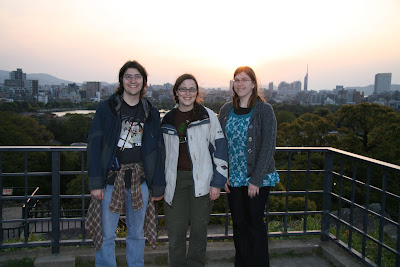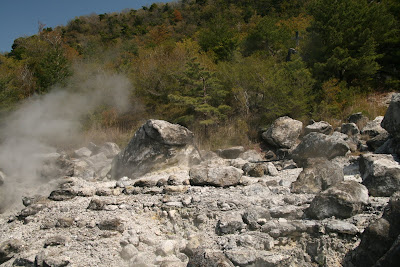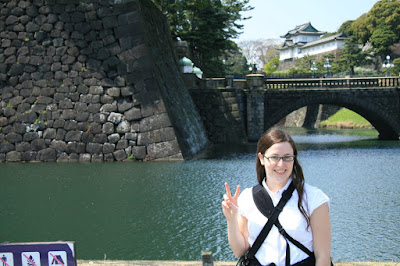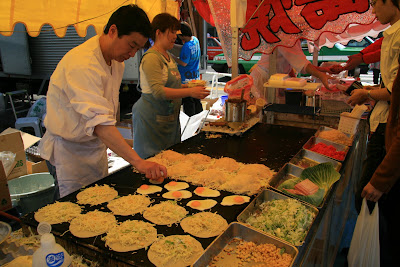帰った?
Newsletter #4, May 17, 2010
So, our all-too-short-term mission trip to Japan has come to an end. Celia finished her last cello concert, Keith finished his ESL classes, our farewell parties stretched on for two weeks (which made leaving Sapporo especially hard), we spent a few weeks vacationing and visiting friends in Honshu and Kyushu, and we flew back to Vancouver, Canada on April 26 (just in time for Regent graduation). For the last few weeks we have been dealing with Canadian taxes, phones, insurance, housing, a mountain of mail, and a million details that piled up while we were gone. Re-entry culture shock has not made this transition easier.
We have a couple of big announcements: first, we are in the process of applying to work in Japan with OMF long-term because we want to spend the rest of our lives being salt and light to the Japanese people. Second: we wanted to be able to announce our new contact information, but things have not worked out the way we expected, so we are not sure where we are going to be living and what sort of work we will be doing while we finish the application process. We hear that on average, it takes about two years to apply and to prepare to go to the mission field.
***
Honshu and Kyushu Vacation Report
This was an article in the print newsletter, but I have already posted a longer version of this article and a lot of pictures on the blog:
Part 1: Tokyo
Part 2: Death, Destruction, Depravity, and Martyrdom (Hiroshima and Nagasaki)
Part 3:A Baby Church and Old Japan (Fukuoka, Kyoto, Hakone, and Inuyama)
***
Re-entry
Keith reflects on leaving Japan
Keith struggles to eat a plate of hotdogs
For some reason, leaving Japan was harder emotionally than entering for Celia and me. We had both heard stories in the past from missionaries who said that when they came to China or Nigeria or wherever they were serving, it felt like they were coming “home.” I used to roll my eyes and think that it was an overstatement.
Celia and I have lived in many places before and after we met, and home was always classified as “where family and friends are.” But as we struggled to leave Japan, we had to come to terms with the fact—as cheesy as it sounds—that home had become a place for us, and that place is Japan. While leaving Japan, one of our most comforting thoughts was that we were certain God was going to provide for us to return to Japan and to continue His work there.
Japan has left its mark on us; no doubt about it. Road rage, rude gestures, huge portions of food, 56 types of oil at the grocery store, overly sweetened desserts, the problem of finding good health insurance, and many other things have surprised us. Since returning we have never felt hungry. I feel weird stepping up onto any raised area without first taking off my shoes.
A couple of weeks ago at the dentist in Vancouver, an Asian dental hygienist came around the corner, and as she began to lean forward, I started to bow. When I saw her reach her hand forward, I looked at it and thought to myself, “I have to touch her?”
Our Japanese inclinations will probably fade away as fast as our Japanese language skills, but still, if we do come to visit you, please have some rice on hand.
***
Language Corner
Keith writes about his Engrish… er… English classes at Kibou no Oka Church
One of the main ministries I did in Japan was the teaching of English through a Bible study and three classes at Kibou no Oka Church. I taught on Friday at 3 and 7 p.m. and on Saturday at 10:30 a.m. and 1:30 p.m. every week.
At times it was very hard to keep my motivation, particularly when students would not show up, which often left me wondering if it was something I did or said that had frightened them away. For instance, there were twelve students in my first advanced English class; the next week only three of them were present. I couldn’t help thinking that maybe beginning that first class with a prayer drove away all the non-Christians. Eventually I found a groove where I would start each class with a game or activity and then focus on only two or three of the week’s lessons. When students did not show up, I found solace in preparing Bible studies and playing the organ in the breaks between classes.
I also learned quite a bit through these classes about Japanese culture, about using ESL classes for evangelism, and about communicating using clear and simple English. Many Japanese people told me that they could understand my English better than any other native English speaker. Then again, I sometimes start speaking like that to other native speakers, e.g. my wife, who is always quick to point out that I sound like a dork.
Engrish of the Month
The sign reads, “Do Not Run In To Train.” Seriously, folks. It hurts.
***
Celia’s Cooking Corner
Japanese Restaurants
I haven’t been doing too much cooking lately, since we’ve been on vacation and staying in other people’s houses. However, we’ve eaten at some amazing restaurants! I’ve been posting about some of our experiences on the blog, so please have a look:
Restaurants I have known and loved, part 1: Sapporo
Part 2, which will feature some of the restaurants we visited on our trip, is coming soon!
***
Prayer Points
Looking back, we are thankful for…
- The impending completion of our OMF application; it is moving forward.
- The warm welcome we’ve received from so many on our return: the Danielsons, who provided us with housing, airport pickup, and even a car to borrow in Vancouver; the Wilsons, especially since Dan cleaned the mice out our car; and the Olsons—we’re looking forward to spending time with all our nieces and nephews in Florida!
- All the people who have supported us, prayed for us, and encouraged us during our time in Japan.
- All the relationships that we formed in Japan. We are continuing to pray that we are able to maintain these relationships at a distance.
- The continuing work among the Japanese. Please pray that there will be other workers who will continue the work we had been doing.
- Satsunae Lighthouse Church. We received news that there is now a candidate to become their pastor. Please pray for wisdom to decide if this person is the right pastor for this church.
- The completion of our OMF application process and the other preparations that will need to be made… and patience as we are waiting!
- Candidate course: we will be attending a 2-week course in which we will be extensively interviewed and learn more about the preparations we will need to make to go back to Japan. This will take place in Colorado from June 13-25. Please pray for energy to get through a very busy and intense couple of weeks.
- God’s guidance as we are trying to decide where to live and work while we prepare to return to Japan.
- Our transition to life in North America.
It’s been quite a journey… and the journey continues! Now that we’re back in North America, we hope to see many of you face to face and to share with you more about our time in Japan. We will keep you updated on our application process and our preparations to return to Japan. Thank you so much for your prayers and support!
Love, Keith and Celia



















































